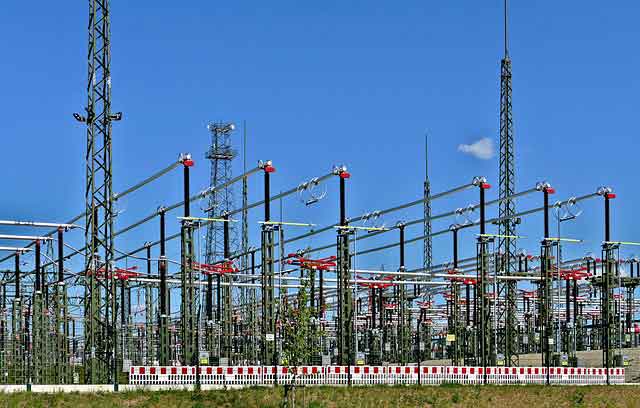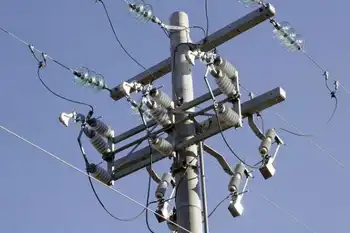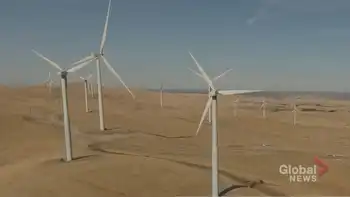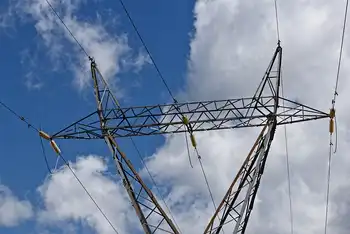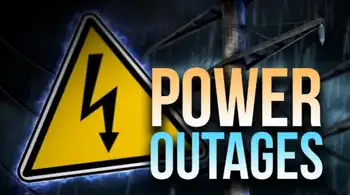Some Americans clamor to have wind at home
By Reuters
Substation Relay Protection Training
Our customized live online or in‑person group training can be delivered to your staff at your location.

- Live Online
- 12 hours Instructor-led
- Group Training Available
Darrin Russell of Southwest Windpower was inundated with questions during the Windpower 2009 convention where he explained the economics of the company's workhorse 2.4 kilowatt Skystream turbine, which plugs into the local electrical grid.
"It's nice watching the (electricity) meter go backward. Sometimes it gets going pretty fast when the wind blows hard" which it does often at the company's headquarters in Flagstaff, Arizona, he said.
Russell paid practically nothing for his own turbine, which costs roughly $14,000 to buy and install, thanks to a newly enacted 30 percent federal tax credit for wind projects large and small, state tax credits and rebates of up to $9,000 from many utilities eager to promote renewable energy. The first month his electricity bill was zero.
The company sells to business, homeowners and developers.
"Some companies like to line them up outside instead of flags" to promote their green credentials, he said. "Helps keep their offices cool at least."
Retailers can draw in environmentally conscious customers if they have a wind turbine outside, experts say.
Potential buyers from Chile, South Korea and the state of Michigan flocked around Southwest Windpower's olive-green machine with three distinctively curved blades, designed to cut noise. Russell said the company has sold 5,000 small turbines in the past two years, and 150,000 in total.
There are hurdles to local wind systems, of course.
Cost is one, since the turbines are not inexpensive and installing a tower adds considerably to the expense. Putting it directly atop a rooftop is not feasible because wind currents are too turbulent.
Another problem is skeptical neighbors who may not want to see or hear a whirring turbine in the yard next door without sharing in the benefits. Think of the highly public protests to a proposed offshore wind farm near Cape Cod.
Municipal laws can also restrict the height of structures and carry safety requirements. Russell said one-half acre (0.2 hectare) of land is often required to erect a wind turbine.
Finally, there is the question of commitment to green energy and whether a $15,000 investment or more is really worth the trouble. It can take many years for a wind turbine to pay for itself, and maintenance problems occasionally arise.
Duncan McMillan of Gusto Energy Ltd in New Zealand said he has been perfecting his home turbine-solar-battery system for a dozen years but has sold only 20 in that time.
"We have a windy nation.... If the New Zealand government did half of what the U.S. government does, we'd be selling a lot of these," he said.
The largest wind turbine producers such as General Electric build only the much larger machines for the wind farm market.
"There is certainly a market there (for small wind turbines), but I'm not sure how big it is," said Jon Wellinghoff of the Federal Energy Regulatory Commission in an interview at the convention. "Right now, most of the wind is primarily large systems, a megawatt or more, but there's a lot of opportunity for it."
Bergey Windpower Co have been selling small wind turbines for 30 years and it lists a 1-kilowatt machine for $2,800 — plus the tower.
Investment in private wind turbine companies has arrived in the form of venture capital.
RockPort Capital Partners helped Northern Power Systems of Warren, Vermont, raise $50 million. It has sold 100 of its mid-sized 100-kilowatt turbines that can save thousands of dollars annually for a school, office building or town. It costs roughly $500,000 to own and install.
"You can be green-minded to own this. You also can be cost-minded," vice president of sales James Lund said. "There are incentives that are available, not only in this country but in other countries, that make the numbers work."






